Passiflora caerulea, also known as the 'Passion Flower' or 'Bluecrown Passionflower', has become a very well-known and interesting plant to have both indoors and outdoors. In this article, we'll explore the origins of this plant, as well as its religious symbolism. You're about to learn how caring for a Passiflora caerulea is straightforward and easy.
Passiflora Caerulea - The 'Passion Flower' You Should Know About
One of the most glamorous climbers and indoor thriving plants is the award-winning Passiflora caerulea, a vigorous, large semi-evergreen climber with twining tendrils. The exotic beauty of its flowers is attention-catching, featuring white, sometimes pink, flowers with a ring of blue, white, and purple filaments.
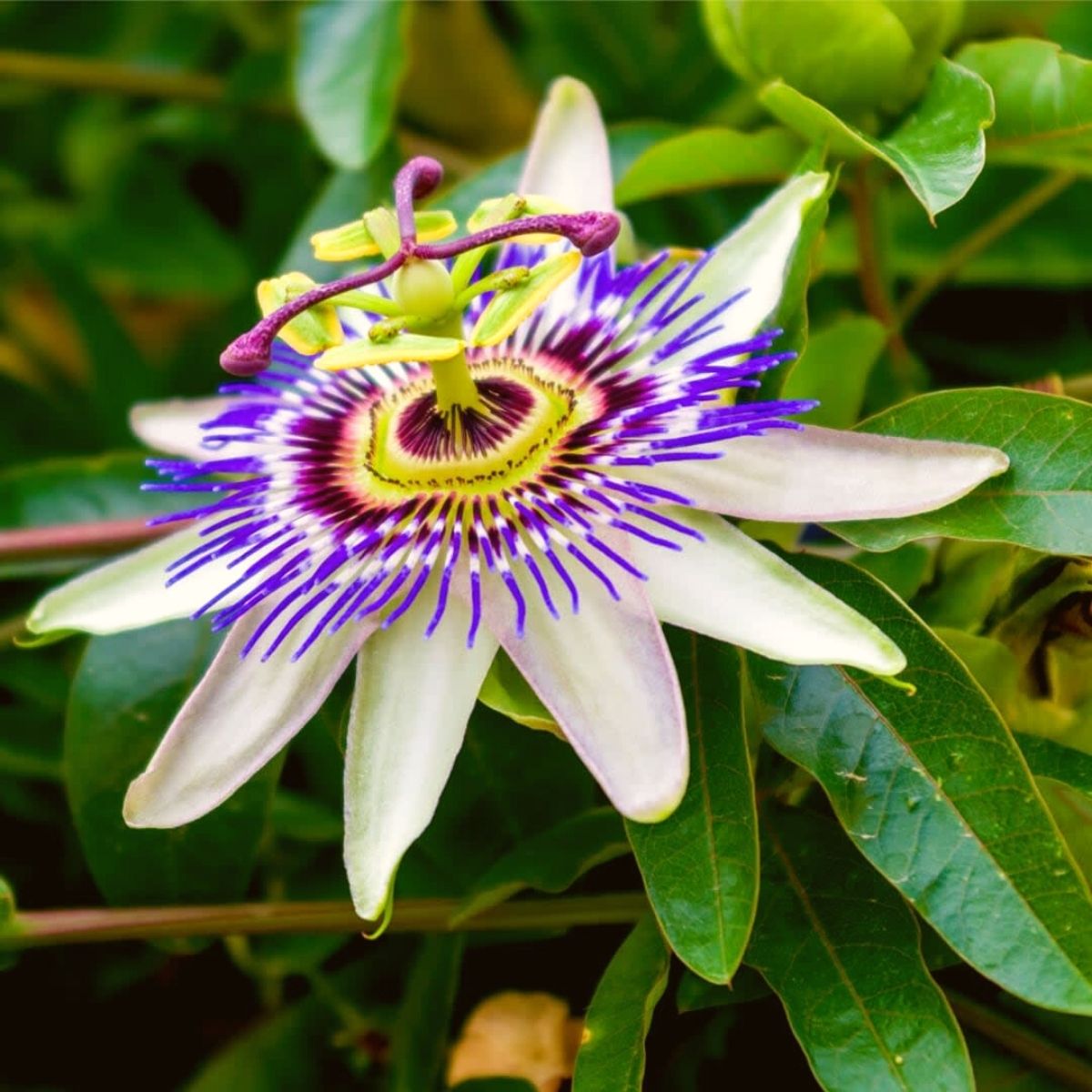
This plant consists of shiny, rich green leaves, and best of all has a very special religious meaning to it. Beauty and symbolism is the best combo found in nature. Passiflora actually makes part of the most beautiful blossoming plants! Read the article 'The Most Beautiful Flowering Plants for Your Tropical Garden'.
Origin of Passiflora Caerulea - Native Range and Naturalized Regions
Passiflora caerulea is a perennial vine native to South American countries and regions such as southern Brazil, Argentina, Paraguay, and Uruguay. It has been deliberately introduced as an attractive flowering plant to many parts of the world and nowadays has become established as an invasive species in New Zealand, Hawaii, offshore Chilean islands, and possibly other Pacific islands, earning it a mention among must-see flowers around the world.
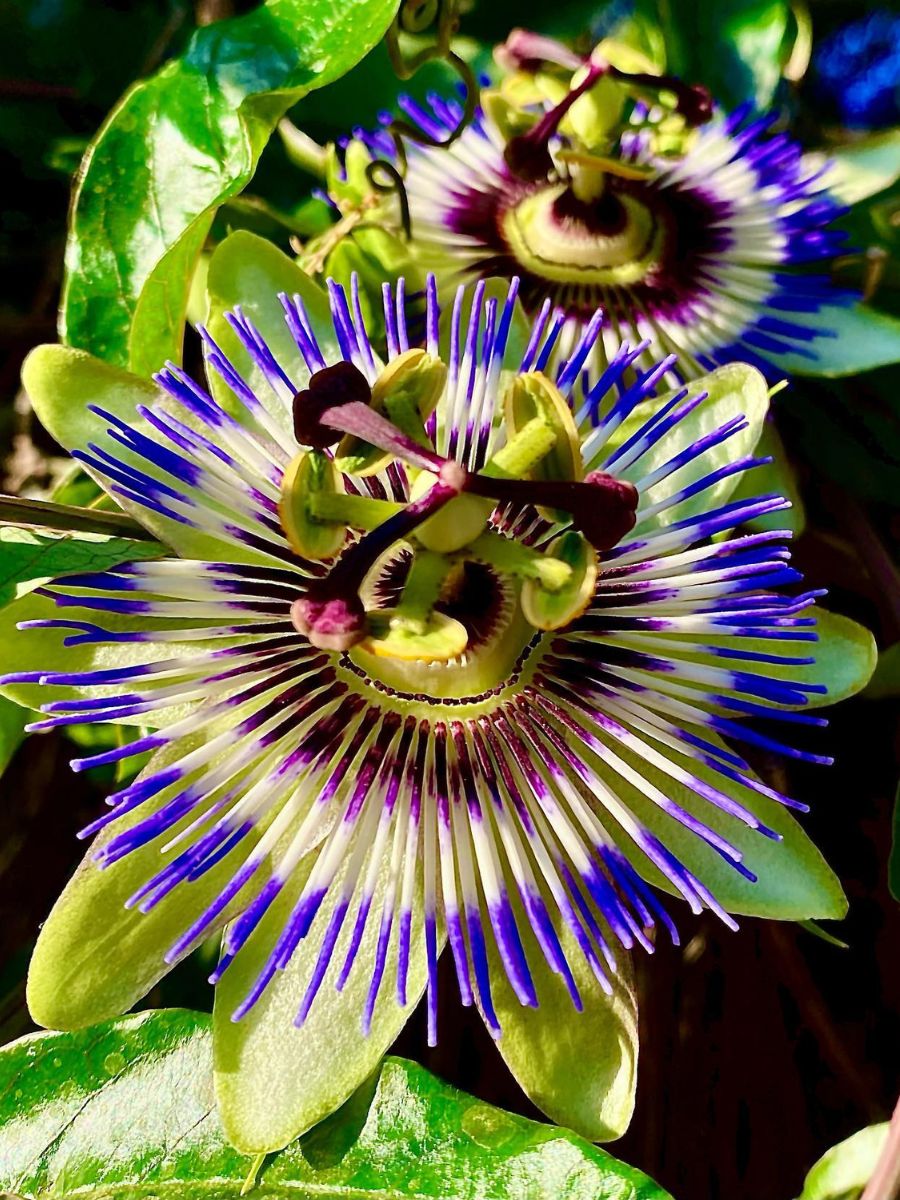
Fruitset, Flavor, and Harvest - Passiflora Fruits
The multi-colored 8cm blooms also bear edible fruit from late summer through the entire fall season. Passion fruit has a fresh taste. A sweet-but-also-tart flavor, and a fragrant aroma. It's hard to compare them to other fruits since they are so unique. In the tropics, they are mixed with sweet fruits to give some counterbalance. If pressed, how they taste: think a little like a kiwi, a little like pineapple.
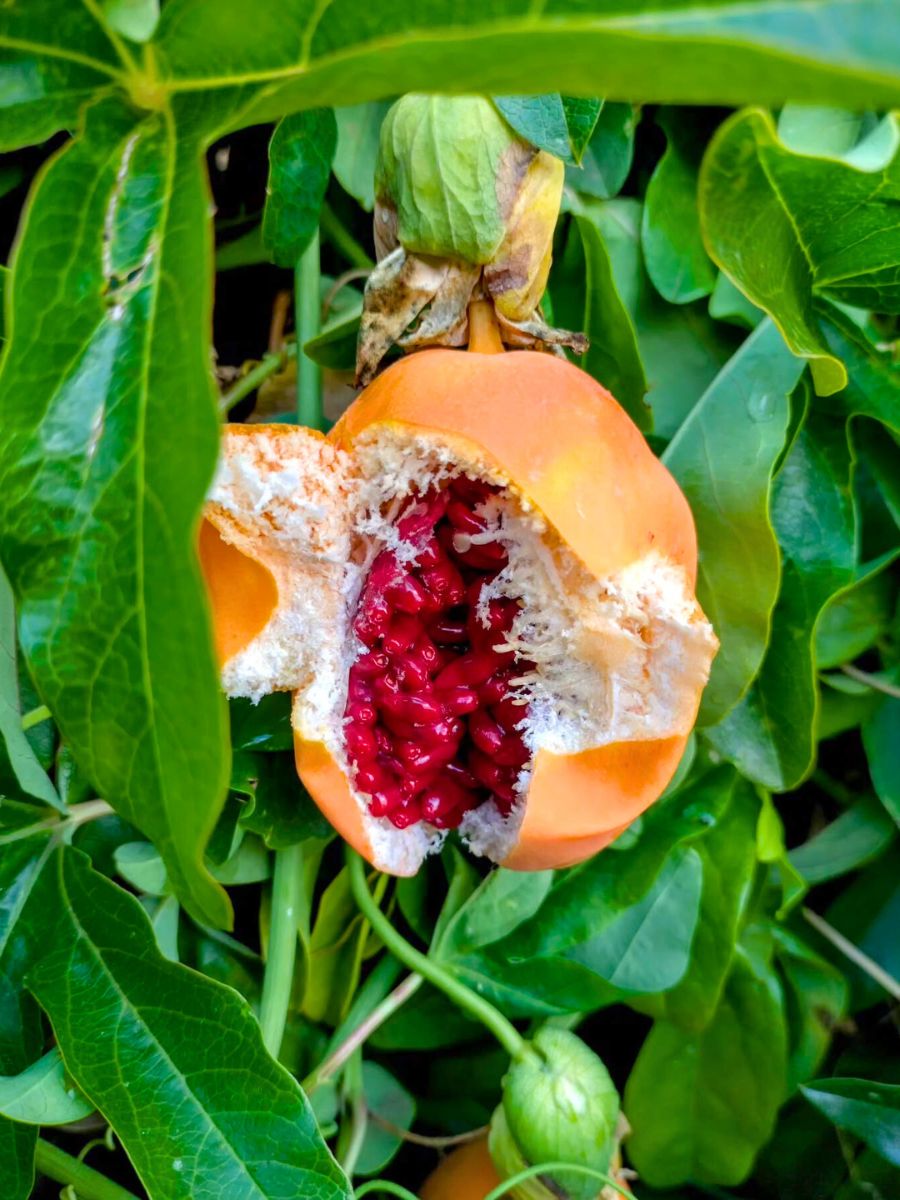
The plant is evergreen, especially in tropical climates, but deciduous where winters are cool. Did you know it is known to survive temperatures as low as -15 degrees Celsius (5 degrees F) when grounds were frozen for over two feet deep? The best part is that it's both an indoor and outdoor plant. Read the article 'Study Reveals the Top Houseplant in 147 Countries Around the World' to learn where Passiflora caerulea is most popular around the world.
Caring for Passiflora Caerulea
Despite having a tropical appearance, Passiflora caerulea may actually be grown and produced practically anywhere, even in far colder climates. In reality, some kinds of passionflower can spread quickly in warmer climates, so you may even discover these seemingly delicate vines blooming by the side of the road.
This plant is typically trained on a trellis, fence, or other vertical structures where they are hardy. These plants are frequently planted in pots and brought indoors for the winter in climates where they are not hardy. They should typically be planted on average, but in well-drained soil, in full sun to light shade. For many species that can be harmed by strong winds or inclement weather, a protected site is advised, such as against a garden wall.
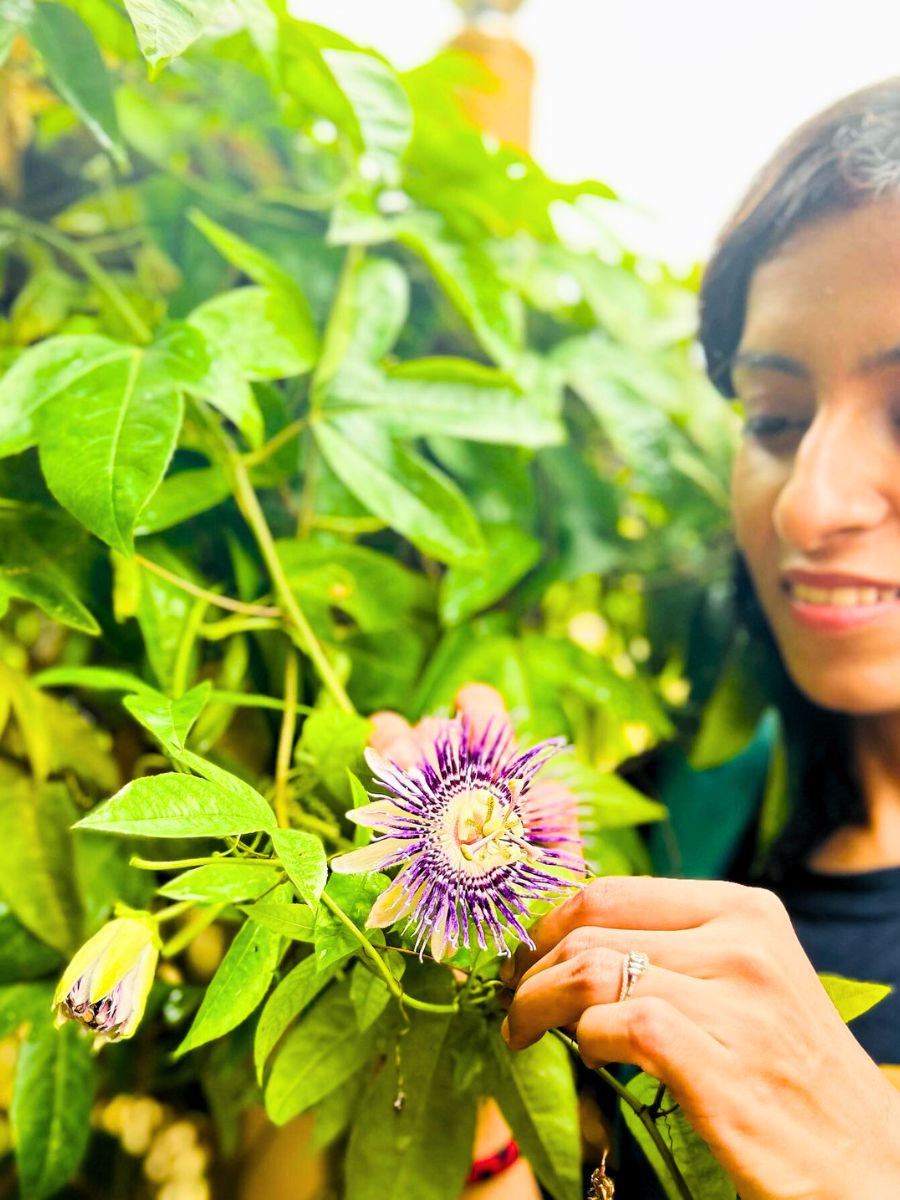
Light Needs for the Blue Passionflower
Plant it in full sun to partial shade to keep it flourishing and healthy. In severely hot areas, plants benefit from some afternoon shade. Typically, blue crown passion flower requires four to six full hours of sunlight per day (or more in cooler climates). For extra inspiration, discover feng-shui plants that draw in good energy. Give potted plants bright, indirect light, and keep them away from drafts if you move them indoors for the winter.
Watering Schedule for this Passiflora
After planting, the Passiflora needs to be given a thorough watering. Beyond that, during their growing season, they normally flourish on one or two weekly waterings. A weekly supply of 2-3 cm (1 to 1.5 inches) of water should be provided.
How to Plant and Soil Passiflora Caerulea to Maximize Fertility
Passiflora caerulea should be planted in fertile, moist soil that drains properly. The pH of the soil is unimportant and can range from 6.1 to 7.5, which is in the neutral to acidic range. Mulching around the base of the plant will help it retain moisture without becoming waterlogged, and adding compost to the planting hole will help supply nutrients.
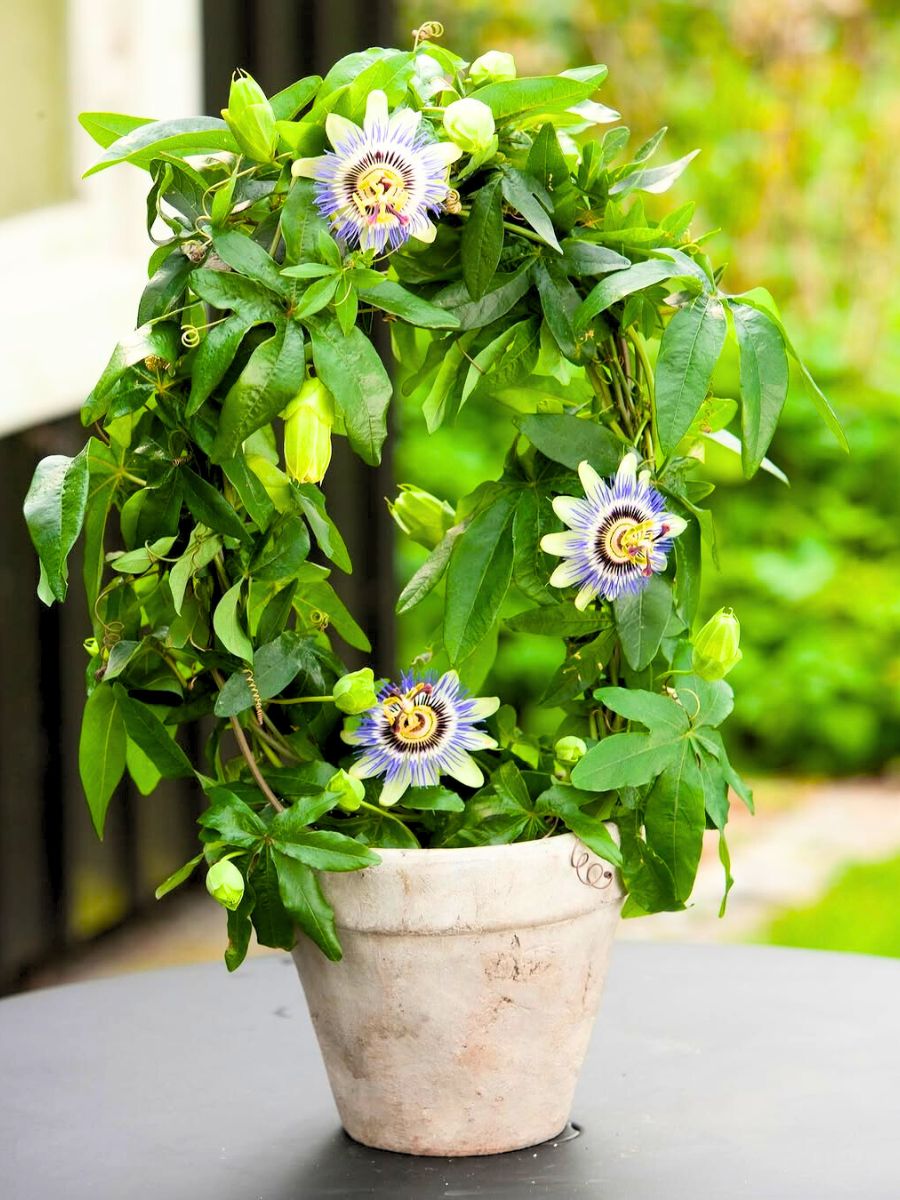
How to Grow Passiflora Caerulea Indoors
Passiflora caerulea should be brought indoors as the possibility of frost approaches if you live in a region with freezing winters. This plant does, in fact, thrive best outdoors, rather than indoors. But if you're going to give it a try indoors, make sure to grow it in a sunroom, greenhouse, or room with southern exposure. Take into account that it will not grow as quickly or bear fruit when cultivated inside. For more design ideas, browse our feed of inspiring garden-plant displays.
Dig out your Passiflora, keeping the rootball whole, and repot it in wet, enriched potting soil in a container with lots of drainage holes. When the risk of frost has passed in the spring, try to take your plant back outside.
The Religious and Spiritual Symbolism Behind Passiflora Caerulea
When it was discovered by 16th-century Christian missionaries in South America, its distinctive characteristics reminded them of the Passion of Christ, which led to its name. The term “Passion”, regarding Christianity, represents the suffering and death of Jesus Christ.
They believed that several parts of the plant, including the petals, rays, and sepals, symbolized features of the Passion. The flower's five petals and five petal-like sepals represented the 10 apostles who remained faithful to Jesus throughout the Passion. The circle of hairlike rays above the petals suggested the crown of thorns that Jesus wore on the day of his death.
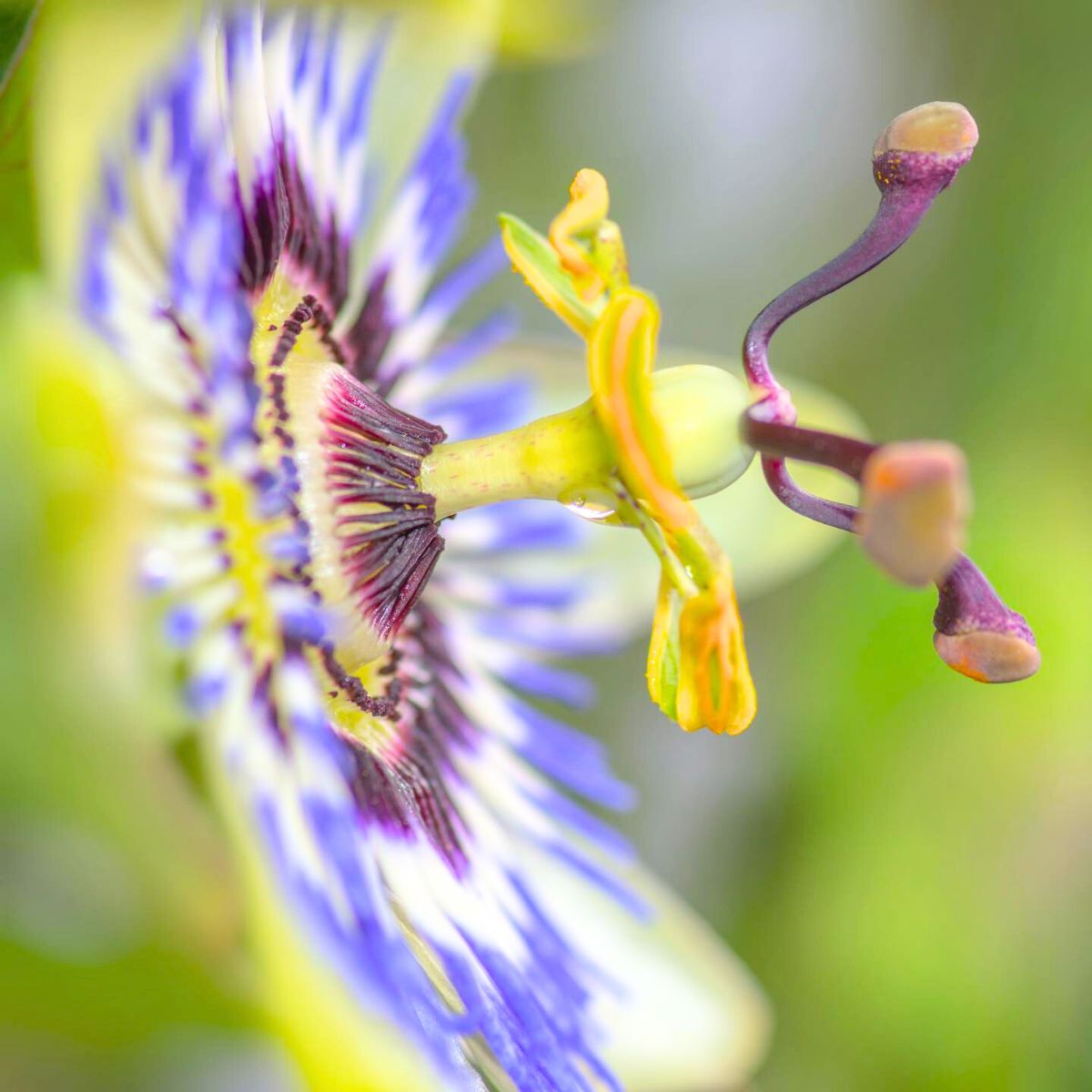
Edible Uses and Medicinal Benefits of the Blue Crown Passion Flower
Additional medical uses for the blue crown passion flower include anti-inflammatory and anti-diarrheal properties. The fruit is beneficial for digestion when eaten raw, and a tea made from the leaves or roots is effective against gastrointestinal symptoms and infections. Additionally, the roots and leaves, when made into tea, stun and expel intestinal parasites. The fruit is used in traditional ways in Brazil and Mauritius as an anxiety reliever and sedative against insomnia. For a broader perspective on botanical healing, read our feature on flowers in traditional herbal medicine.

Photo: @mutable.earth.botanicals
Research found on Vanderbilt College of Arts and Science.





